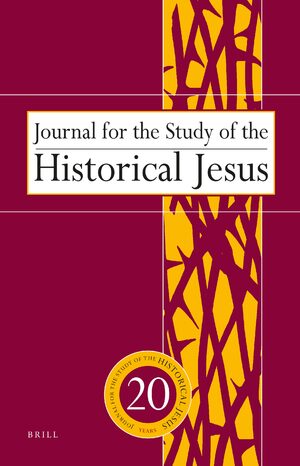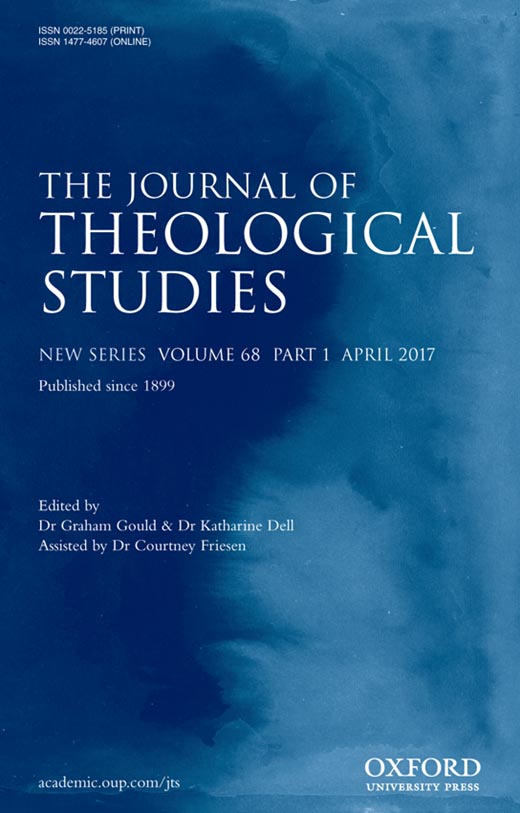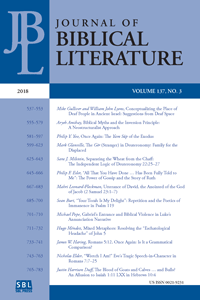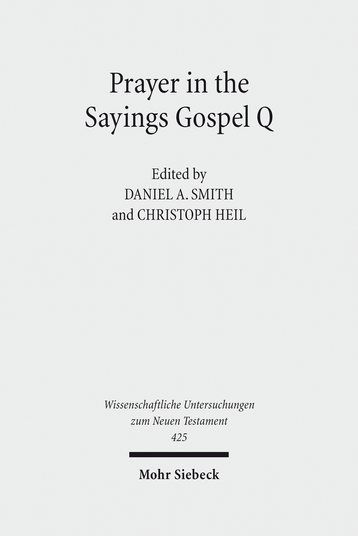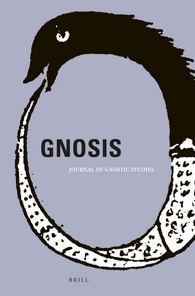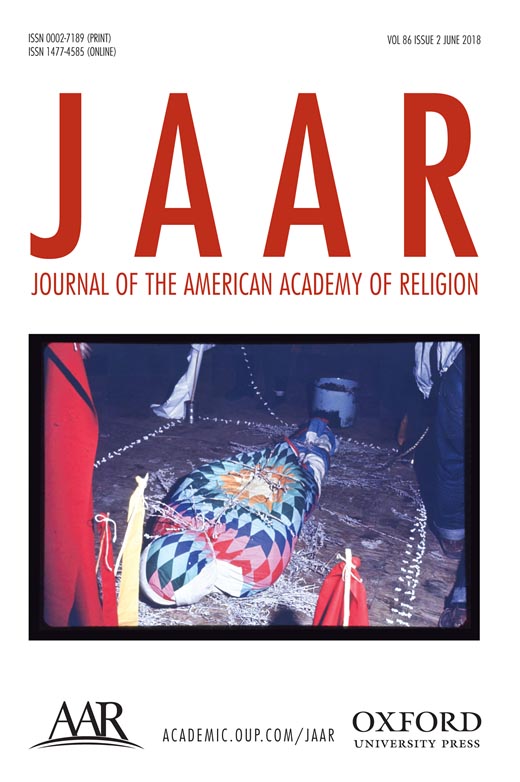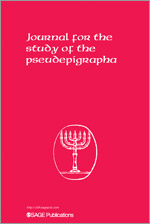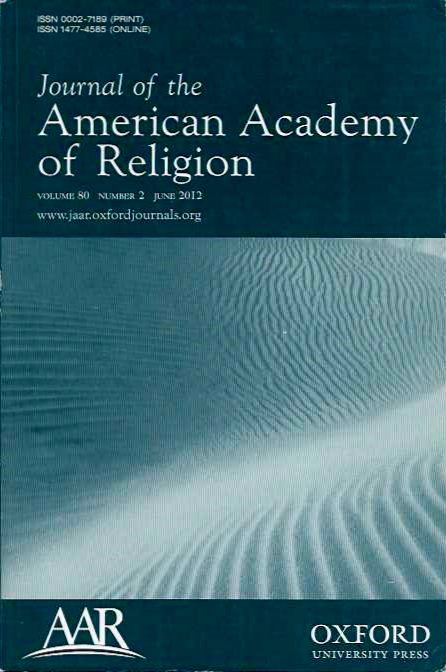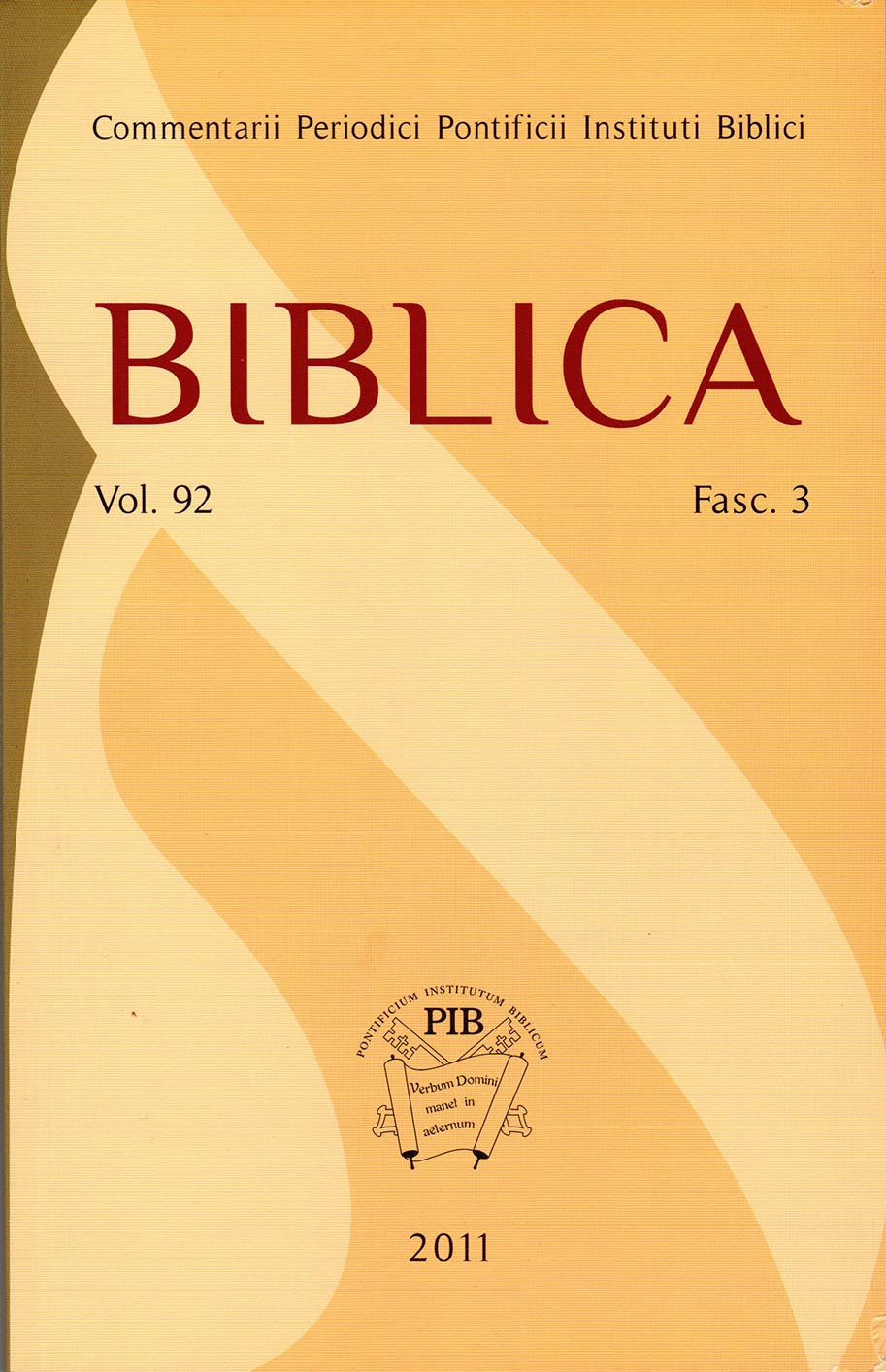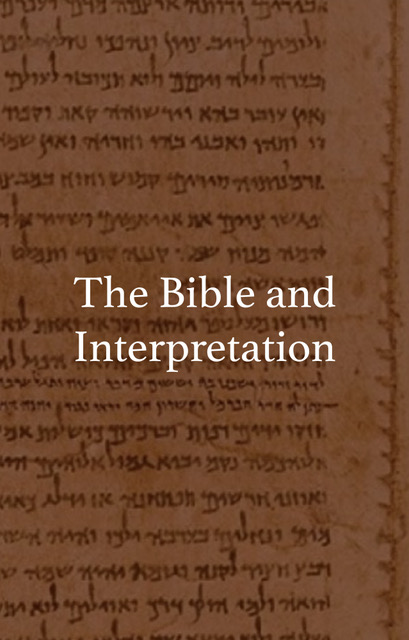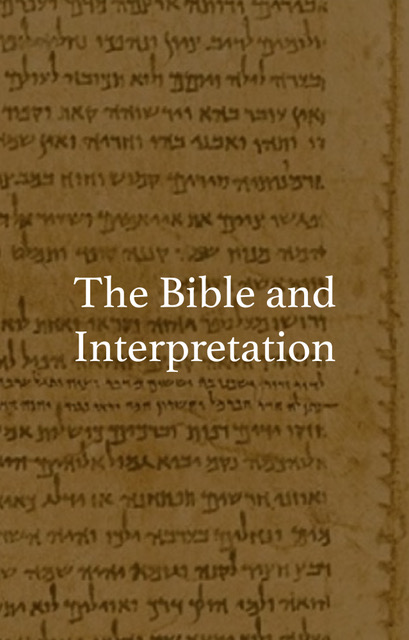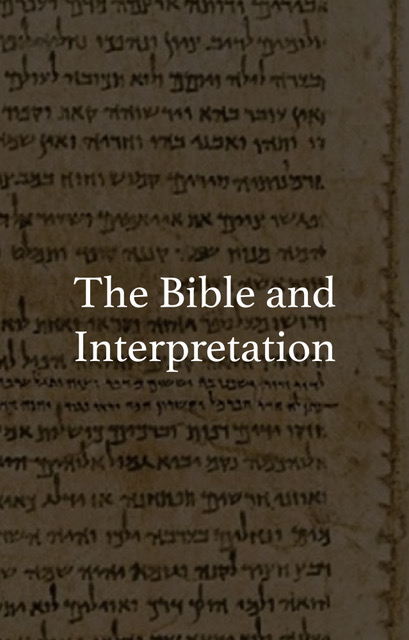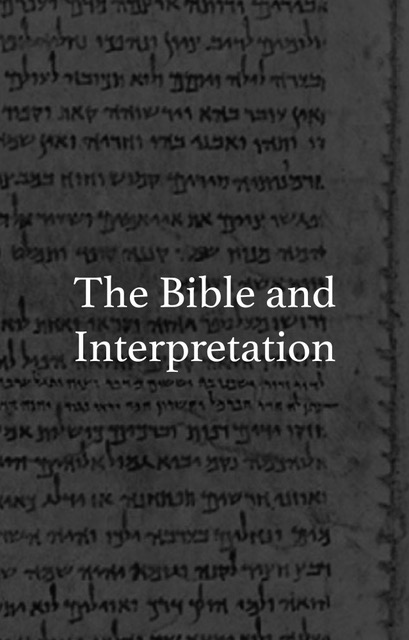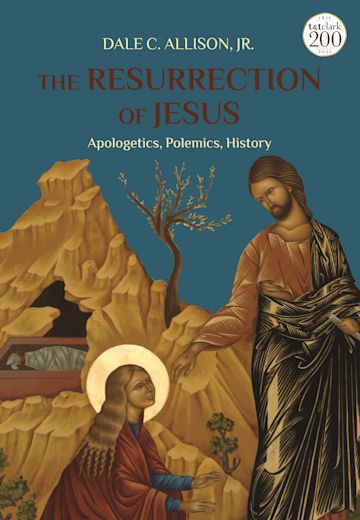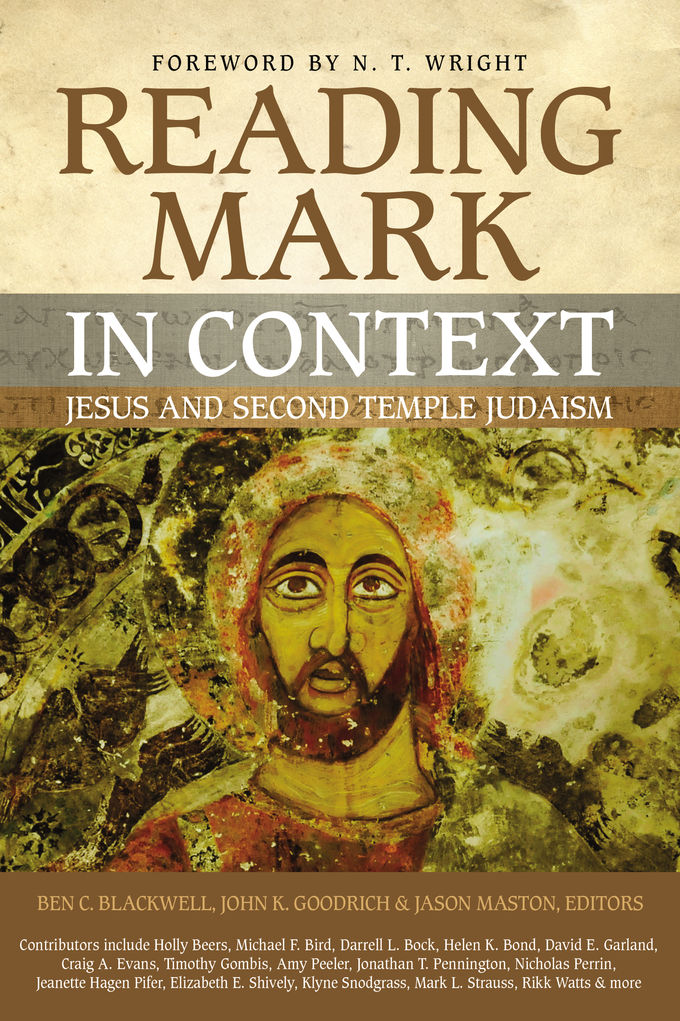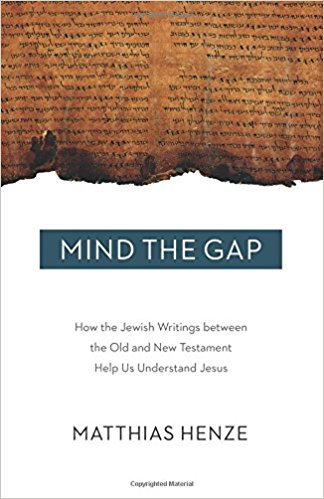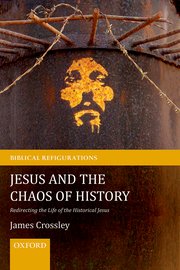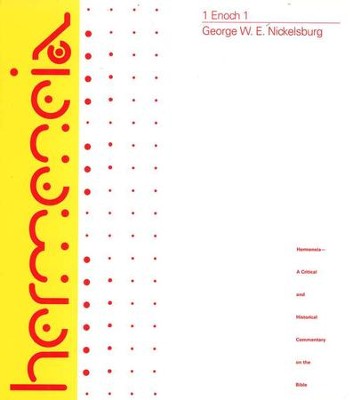‘I Shall be Reckoned with the Gods’: On Redescribing Jesus as a First-Century Jewish Mystic, Journal for the Study of the Historical Jesus 18 no. 3 (2020): 220 - 243
https://brill.com/view/journals/jshj/18/3/article-p220_220.xml
The categorical identification of the historical Jesus continues to be a central challenge in Jesus Research yet the identification of the historical Jesus as a first-century Jewish mystic has long been a popular topic among Western esotericists, Christian mystics, contemporary New Age authors, and some biblical scholars. Taking a critical look at the category and study of mysticism in Jesus Research in light of the ancient etymological origins of modern mysticism, the concept of ‘religious experience,’ and the epistemological problems associated with perennialism as a religionist discourse, this article argues that the comparative study of mysticism still proves to be an explanatorily powerful analytical, theoretical, and interpretative lens in Jesus Research.
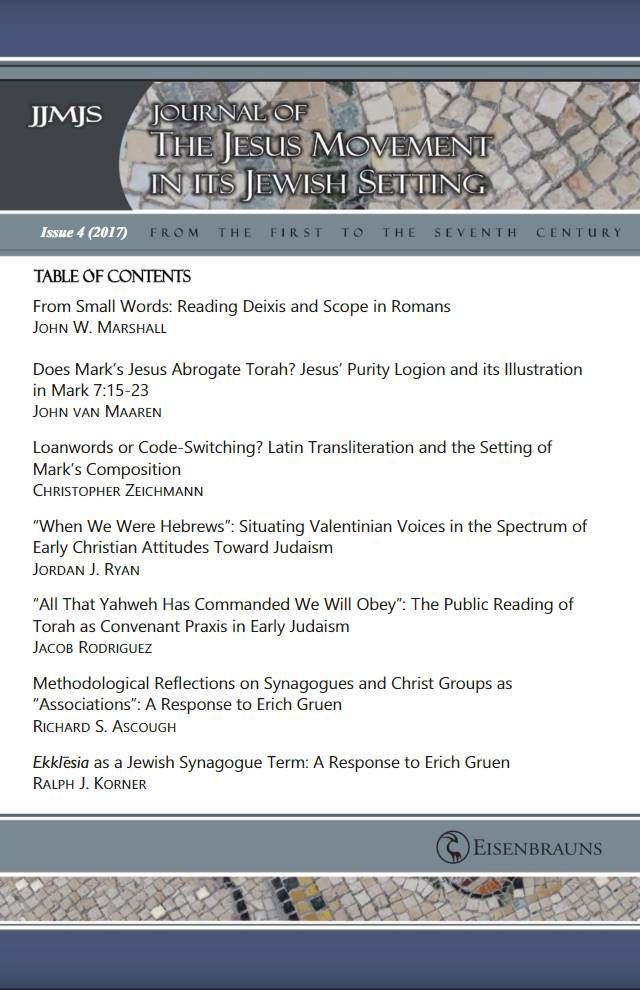
Other Voices: Remembering the Marginalized Vegetarian in the Study of Christian Origins, Journal of the Jesus Movement in its Jewish Setting no. 6 (2019), 46-67
http://www.jjmjs.org/uploads/1/1/9/0/11908749/joseph.pdf
The early Jesus movement, comprised of both Jews and Gentiles, included both Jewish vegetarians and Gentile non-vegetarians. Presumably, there were also Jewish non-vegetarians and Gentile vegetarians. Yet insofar as Jewish Christian texts represent multiple vegetarian traditions, it seems safe to surmise that vegetarianism was a relatively common feature of these communities. Since Paul’s letters attest to vegetarianism already being practiced in the Corinthian and Roman ekklēsia, there is good reason to think that Jewish Christian vegetarianism may have had less to do with maintaining the laws of kashrut in foreign lands, lamenting the loss of the Temple, or practicing asceticism, and more to do with efforts to realize and enact their eschatological convictions, one of which was the restoration of the antediluvian diet prescribed by God in Genesis 1. Rabbinical Judaism and Orthodox Christianity developed in opposition and contradistinction to Jewish Christianity, purposefully forgetting Jewish Christian traditions.

A Social Identity Approach to the Rhetoric of Apocalyptic Violence in the Sayings Gospel Q, HR 57 no. 1 (2017), 28-49
https://www.journals.uchicago.edu/doi/10.1086/692316
The Sayings Gospel Q’s rhetoric of apocalyptic violence has been described as “terrifying,” its attitude towards “this generation” hostile, and its pronouncement of impending judgment an overarching literary-rhetorical orientation of its author. The author’s strained relationship(s) with fellow Jews represents a case study of nascent sectarian formation. Social Identity Theory is a social-psychological research method that explains how group identity is constructed in and through the exclusion of others, i.e., by discrimination, prejudice, stereotyping, and intergroup conflict. In this paper, I will analyze the use of rhetorical violence in the Sayings Gospel Q through the socio-psychological lens of Social Identity Theory in an effort to trace the origins, history, and development of Q’s intergroup conflict, a conflict that represents not only a seminal moment in the emergence of early Christianity but a pivotal point in the parting(s) of the way(s) between Jews and Christians and the construction of ancient Christian identity.
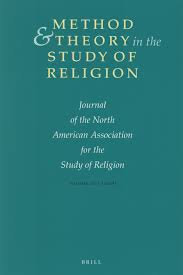
An Indigenous Jesus: Methodological and Theoretical Intersections in the Comparative Study of Religion, Method and Theory in the Study of Religion 34 (2022), 238-266
https://brill.com/view/journals/mtsr/34/3/article-p238_2.xml
Indigeneity is a relational category that is predominantly, albeit not exclusively, applicable to Indigenous peoples. As a central theoretical site of discourse in Native Studies, indigeneity tends to be characterized by politicized relationships and provides powerful rhetorical strategies and counter-narratives. Facilitating decolonization as well as illuminating the structural and systemic relationships between the indigenous and the colonial, Indigenous theory recognizes the often complex inter-relationships attending the delineation of ethnic, social, and religious identity. The historical Black Elk, for example, illustrates how Lakota and Catholic religious identities co-exist in an ongoing site of discursive tension. This article argues that the historical figure of Jesus can be recognized as an indigenous Judean, complicating contemporary efforts in which the quest for the historical Jesus occurs in a predominantly Christian discursive context.
'Blessed is the One Who Stands in the Beginning’ (L. 18): Revisiting Protological Eschatology in the Gospel of Thomas, Journal of Theological Studies 72 no. 2 (2021), 769-794
https://academic.oup.com/jts/article/72/2/769/6470394
Since its (re)discovery, the Gospel of Thomas has been a central site of debate in the study of Christian origins. Some scholars regard Thomas as a ‘fifth gospel’; others an ‘anti-Jewish’ text dependent on the Synoptics. This article revisits one of Thomas’s most distinctive themes: proctological eschatology. This article argues that logion 18 represents a worldview characterized by an Urzeit/Endzeit correlation, a motif relatively common in apocalyptic Judaism, and reminiscent of arguments from creation characteristic of the historical Jesus
'In the Days of His Flesh, He Offered Up Prayers’: Reimagining the Sacrifice(s) of Jesus in the Letter to the Hebrews, Journal of Biblical Literature 140 no. 1 (2021), 207-227
https://www.jstor.org/stable/10.15699/jbl.1401.2021.10?fbclid=IwAR3M3g_5BE9LwBrz72XqYBB2AIoqy7FEwvZHaxD2usc8Mmj0UJ0NYe6co4o&seq=1
The Letter to the Hebrews is generally regarded as the most sacrificial text in the New Testament. This article argues that Hebrews, read within the wider context of sacrificial discourse in the ancient Mediterranean world, not only represents a textual moment in the rhetorical dissociation of the early Jesus movement from the sacrificial cult in Jerusalem but also reflects the rhetorical obfuscation of Jesus’s sacrificial self-offering as it was being replaced by an emphasis on the interpretation of Jesus’s death as a sacrifice, with the result being the inevitable sacrifice of the former for the latter in early Christian discourse.
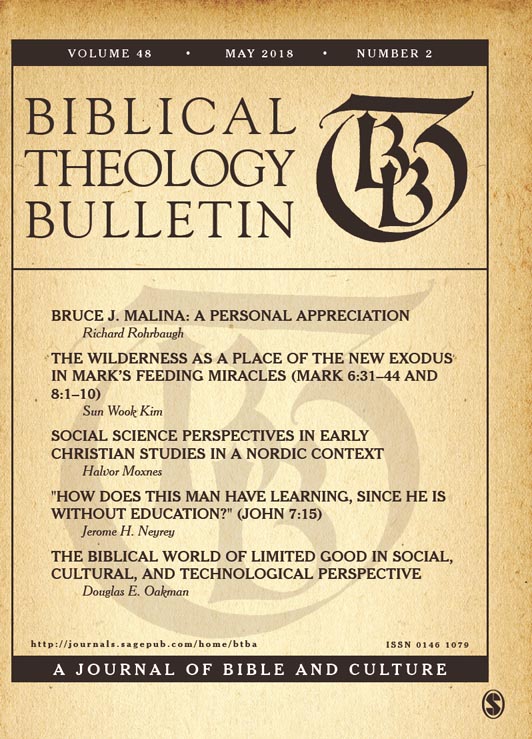
"The Land Is Mine” (Lev 25:23): Reimagining the Jubilee in the Context of the Palestinian-Israeli Conflict, Biblical Theology Bulletin 50 no. 4 (2020), 180-190
https://journals.sagepub.com/doi/abs/10.1177/0146107920958985
The Jubilee tradition commemorates the release of slaves, the remission of debt, and the repatriation of property, a “day” of physical and spiritual restoration. The Jubilee tradition—originating in a constitutional vision of ancient Israel periodically restoring its ancestral sovereignty as custodians of the land—became a master symbol of biblical theology, a powerful ideological resource as well as a promise of a divinely realized future during the Second Temple period, when the Qumran community envisioned an eschatological Jubilee and the early Jesus tradition remembered Jesus’ nonviolence in Jubilee-terms. Jubilee themes can also be identified in ideals inscribed in the founding of America, the Abolition movement, the Women’s Liberation Movement, the Civil Rights movement, and Liberation Theology. This study seeks to extend the exploration of Jubilee themes by adopting a comparative methodological approach, re-examining Jubilee themes in the context of the contemporary Palestinian-Israeli conflict, where the dream of Peace in the Middle East continues to play out in predominantly politicized contexts.
The Secret Pipe: Protecting the Ptehíŋčala Čhaŋŋúŋpa of the Lakota Sioux, History of Religions 59 no. 1 (2019): 38-67
https://www.journals.uchicago.edu/doi/abs/10.1086/703522
The Sacred Pipe is a central symbol of the Lakota (Lakȟóta) religion. Facilitating communication between the human and spirit worlds, the Sacred Pipe is an instrument of prayer and a portable altar of “sacrificial” offerings. Since the late 1800s, the Lakota origin story of the Sacred Pipe (Čhaŋnúŋpa wakȟáŋ) has been told and retold many times. As a result, the Pipe has become a well-known symbol of the Native religion. Lakota religion and culture, in other words, has become something of an open secret, with secrecy being not only an integral part of Lakota religion but part of its mystique and esoteric allure. This article explores the social and religious effects of secrecy and disclosure and their mutually implicated dynamics.
The Promise of Providence and the Problem of the Parables: Revisiting Prayer in the Sayings Gospel Q, Prayers in the Sayings Gospel Q (ed. Daniel A. Smith and Christoph Heil; WUNT; Tübingen: Mohr Siebeck 2019), 57-87
https://www.mohrsiebeck.com/en/book/prayer-in-the-sayings-gospel-q-9783161566615?no_cache=1
Since the 1960s, the composition of Q has widely been identified with instructional wisdom. The author of Q drew from the literary conventions, style, rhetoric, and content of Jewish wisdom literature. In this paper, I wish to re-examine Q’s prayer texts within the context of Early Jewish texts, particularly the Enochic Book of Parables. I presuppose here that Q is a “textual” product of Palestinian Judaism, a literary work centered on the figure of “Jesus,” who came to be featured in prayer practices as both exemplars for and as the recipient of prayer.
'Knowledge is Truth’: A Course in Miracles as Neo-Gnostic Scripture, Gnosis: Journal of Gnostic Studies 2 (2017): 94-125
https://brill.com/view/journals/gnos/2/1/article-p94_5.xml
A Course in Miracles represents a modern-day neo-gnostic scripture that reflects significant trends in contemporary Western religiosity, especially the quest for alternative forms of esoteric “spiritual” knowledge and experience in a nominally Christian or post-Christian Western world. While this text has largely been ignored or marginalized in mainstream scholarship, a critical evaluation of the Course, its editing, reception, and contemporary interpretation not only represents a fascinating case study of how “texts” become invested with “scriptural” authority, but illustrates how the Course’s claims about Jesus and God exemplify the gnosticizing trajectories in the contemporary New Age movement.
American Gnosis: Jesus Mysticism in A Course in Miracles, Gnosis: Journal of Gnostic Studies 4 no. 1-2 (2019)
https://brill.com/view/journals/gnos/4/2/article-p165_3.xml
Since its publication in 1975, A Course in Miracles (ACIM) has continued to grow in popularity as a major feature of New Age spirituality. While the text of the Course is not a direct imitation of any particular form of ancient Gnosticism, A Course in Miracles represents an example of the emergence, reception, and popularity of gnosticizing trajectories of thought in the New Age movement. As a modern-day neo-Gnostic text, A Course in Miracles reflects significant trends in contemporary Western religiosity, especially the quest for alternative forms of esoteric, spiritual, and mystical knowledge and experience in a nominally Christian or post-Christian Western world increasingly disillusioned with traditional orthodox theology, Christology, and ethics.
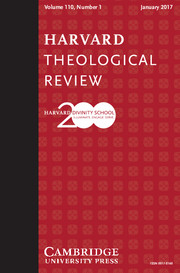
The Quest for the ‘Community’ of Q: Mapping Q Within the Social, Scribal, and Textual Landscape(s) of Second Temple Judaism, Harvard Theological Review 111 no. 1 (2018), 90-114.
https://www.cambridge.org/core/journals/harvard-theological-review/article/abs/quest-for-the-community-of-q-mapping-q-within-the-social-scribal-and-textual-landscapes-of-second-temple-judaism/EFBA03CDC9F5BC7DAEC281E0ECDF564A
Was there a “Q community”? There are many who think that any quest for a “Q community” is a fool's errand. In this paper, I revisit this vexing question by focusing on several distinctive textual coordinates with which we can map Q's author within the social, textual, and theological landscape(s) of Second Temple Judaism. Since the author of Q was capable of crafting innovative scriptural allusions and adapting inherited Jesus traditions, I suggest that Q is not an isolated “Galilean” phenomenon but a textual production that combines Galilean Jesus traditions in conversation with contemporary Jewish apocalyptic traditions and can be located alongside the wider “Essenic” networks that pre-dated and co-existed with the Palestinian Jewish Jesus movement.
Yuwipi: A Postcolonial Approach to Lakota Ritual Specialization and Religious Revitalization, Journal of the American Academy of Religion 86 no. 2 (2018), 364-393.
https://academic.oup.com/jaar/article-abstract/86/2/364/4818258?redirectedFrom=fulltext
The origin, history, and classification of the Lakota Yuwipi tradition continue to challenge Western religious and scientific frameworks and epistemologies. In this article, I reexamine this particular ritual tradition from a postcolonial perspective that is sensitive to and cooperative with contemporary Lakota self-representation(s). This critical reexamination of the history of research on this ritual tradition, the “phenomena” typically associated with it, and its categorical elision under the anthropological rubric of North American “shamanism” seeks to destabilize systemic prejudicial assumptions and conceptualizations while exploring the potential possibility for future collaborative research projects.
Jesus and the Temple Incident: A New Proposal, JSHJ 14 no. 1 (2016), 71-95.
https://brill.com/view/journals/jshj/14/1/article-p71_6.xml?language=en
The Temple incident was a pivotal moment in the ministry of the historical Jesus, if not the causal factor that led to Jesus’ execution. Yet the incident continues to present interpretive problems, not least of which is determining precisely what Jesus objected to about the Temple and its administration. This study proposes a new working model for Jesus’ critical stance towards the Temple, identifying the Temple incident as a symbolic act of eschatological Temple restoration.
Redescribing the Resurrection: Beyond the Methodological Impasse?, BTB 45 no. 3 (2015), 155-173
https://journals.sagepub.com/doi/abs/10.1177/0146107915590765?journalCode=btba
The resurrection of Jesus is the central claim of the Christian faith. It is what makes Christianity a distinctive, perhaps even unique religion—the claim that “God raised Jesus from the dead.” That is also what makes the claim so vulnerable to critics. Why? Because it presupposes the existence and agency of God. Historical hypotheses, however, presuppose human agency and natural causation, not supernatural interventions by God. It is not surprising that contemporary discourse on the resurrection of Jesus is at an impasse. This article explores the current state of research on this subject—a field polarized between apologetic defense and rationalistic expose—and examines various attempts to redefine, reimagine, and redescribe the resurrection tradition within early Christianity.
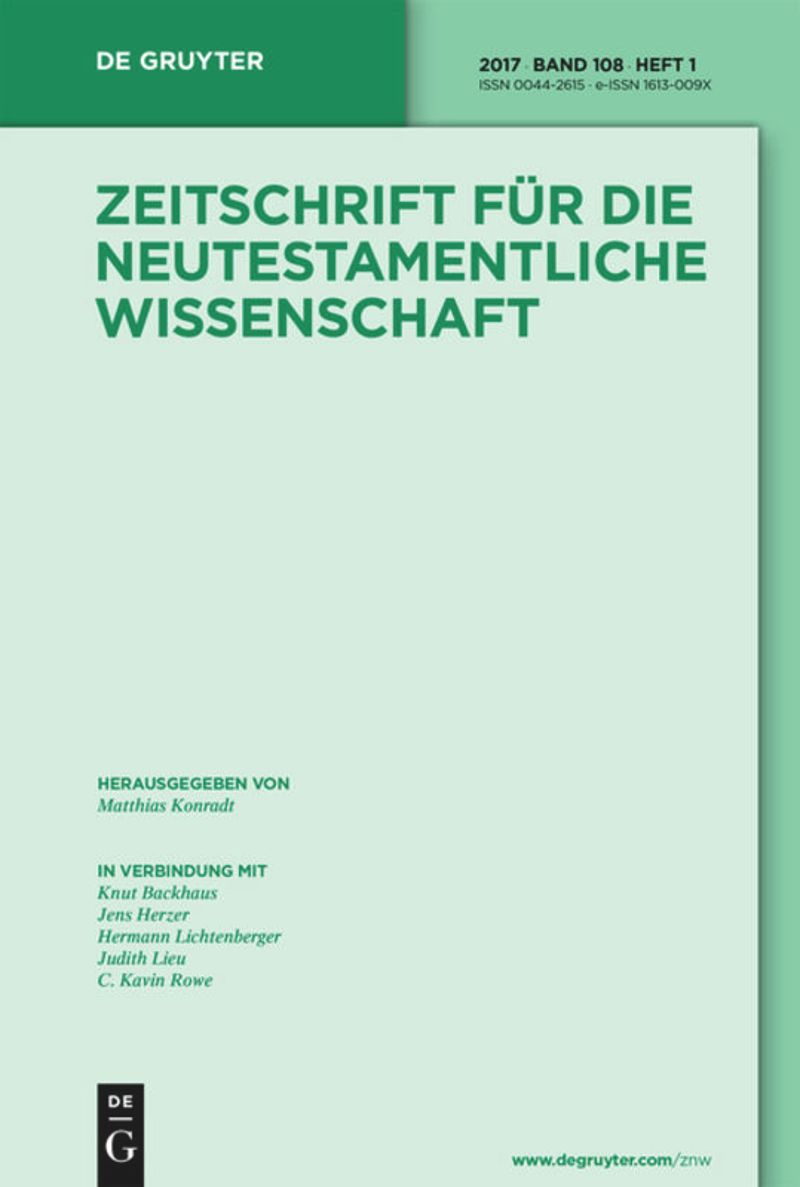
'For Heaven and Earth to Pass Away’? Reexamining Q 16,16-18, Eschatology, and the Law, Zeitschrift für die neutestamentliche Wissenschaft 105/2 (2014): 169-188
https://www.degruyter.com/document/doi/10.1515/znw-2014-0011/pdf
The relationship between Q and the Law is the subject of extensive debate in Q research. Some researchers hold that Q is “indifferent” to the Law. Others believe that Q represents the beliefs of a conservative Jewish-Christian community. This article reexamines the relationship between Q and the Law in three Q texts: Q 16:16, Q 16:17, and Q 16:18. Q 16:16-18 is a complex composition and perhaps only a small subsection in Q, but nevertheless an important key to understanding Q’s relationship to Jesus, the Law, and eschatology. A careful study of this unity—in the context of the religious groups of Second Temple Judaism and early Christianity—suggests that the origin and development of these sayings lie in a highly realized restoration eschatology, the dawn of a new age, a new creation, and a newly interpreted Law.
'Seventh from Adam’ (Jude 1:14-15): Re-examining Enoch Traditions and the Christology of Jude, Journal of Theological Studies 64.2 (2013): 463-481.
https://academic.oup.com/jts/article-abstract/64/2/463/1715766?redirectedFrom=fulltext
The letter of Jude has been called ‘the most neglected text in the New Testament. Today, the epistle is still problematic and debate continues regarding its date, author, provenance, relationship to 2 Peter, ethnicity, orthodoxy, and canonicity. Jude represents a textual site of great significance for Christian origins, especially as it cites the Book of Enoch as authoritative text (Jude 1:6, 14—15; 1 En. 1:9, 60:8). In this essay, I investigate the relationship between Jude, the identification of Jude’s ‘false teachers, and the Christological and theological implications of Jude’s citation of Enochic tradition.
Was Daniel 7:13’s ‘Son of Man’ Modeled After the ‘New Adam” of the Animal Apocalypse?, Journal for the Study of the Pseudepigrapha 22.4 (2013): 269-94.
https://journals.sagepub.com/doi/abs/10.1177/0951820713491679
1 Enoch (1 En.) has become a major site of discussion in contemporary biblical scholarship. Its evident use by the Qumran community, citation in Jude, and canonical status in the Ethiopian Church all illustrate its significance in Second Temple Judaism despite its non-canonical status in rabbinical Judaism and orthodox Christianity. This article compares the ‘son of man’ figure from Daniel 7 and the eschatological ‘Adam’ or ‘white bull’ from the Animal Apocalypse (1 En. 90) in an attempt to determine whether direct literary dependence between these two contemporary texts can be posited in either direction.

'Love Your Enemies’: The Adamic Wisdom of Q 6: 27-28, 35c-d, Biblical Theology Bulletin 43.1 (2013): 29-41
https://journals.sagepub.com/doi/abs/10.1177/0146107912470335
The interpretation of Q 6:27 highlights a perennial problem in biblical scholarship. If Jesus commanded his disciples to love their enemies—and scholars are in virtually unanimous agreement that he did—how are we to understand this imperative in its original Jewish context? How are we to affirm that Jesus criticized his own tradition—which did not encourage a love of enemies—without falling into anti-Jewish rhetoric? Our contemporary concern with Jesus' Jewishness should not preclude us from recognizing the possibility that Jesus criticized certain aspects of the Jewish tradition. The purpose of this essay is to isolate a distinctive element of the early Jesus tradition in its original Jewish context, identify its Christological implications, and explore how an intra-Jewish polemic was subsequently transferred onto inter-religious Jewish/Christian relations.
"Why Do You Call Me ‘Master?’": Q 6:46, the Inaugural Sermon, and the Demands of Discipleship, Journal of Biblical Literature 132/4 (2013): 953-969
https://www.jstor.org/stable/42912476
The most significant realization in recent Q studies is that Q contains extensive sapiential traditions, some of which may have been collected prior to the composition of Q. This study looks at Q 6:46 as the climax of the Inaugural Sermon. James M. Robinson has described this as the “hardest saying of Jesus” because it demands that Jesus’ disciples actually do what he says. In the context of the other ethical “commands” and imperative in the Sermon, Q 6:46 proposes that the disciple is to be like his Teacher, a “son” of the “Father.” A careful literary analysis of Q 6:46 in its Q context may yet shed new light on ongoing debates regarding the relationship(s) between the sapiential, eschatological, and apocalyptic elements in the “Sayings Gospel” Q.
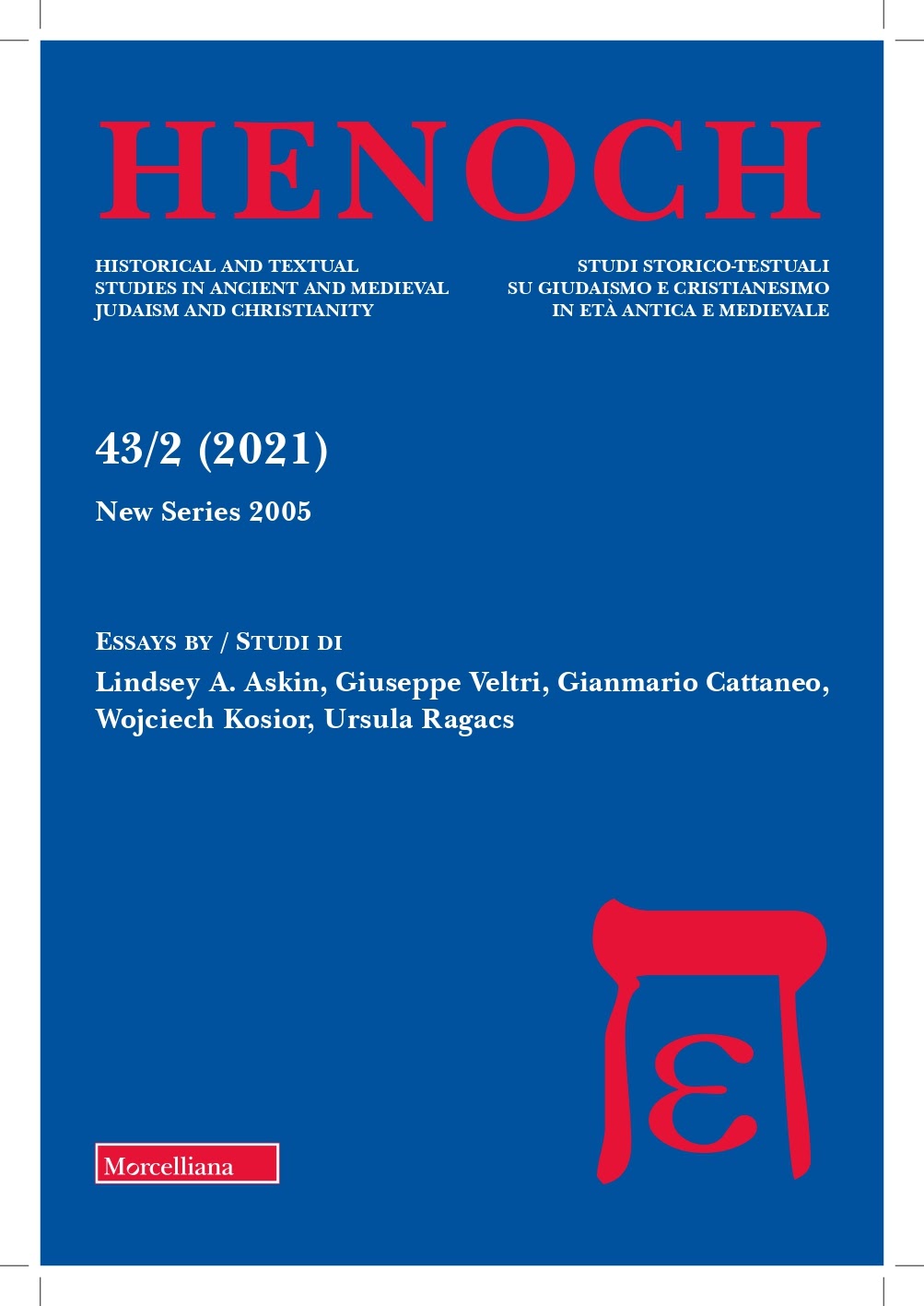
The Eschatological ‘Adam’ of the Animal Apocalypse (1 En. 90) and Paul’s ‘Last Adam’: Excavating a Trajectory in Jewish Christianity, Henoch 34. 1 (2012): 144-170
https://www.degruyter.com/database/AIDA/entry/aida.ID245388/html
The Animal Apocalypse (1 En. 85-90) contains a utopian vision of an eschatological new “Adam.” The Qumran community also anticipated the “glory of Adam” to be made available to their community. Paul explicitly identifies Jesus as Adam, yet Paul was also opposed by Jewish Christians, an opposition which leaves open the possibility of a breach between Paul’s theological anthropology and that embraced by other Jewish Christians. This paper argues that the Enoch tradition influenced early Jewish Christian messianism by providing a different account for the origin of evil and a different model of eschatological Adamic humanity. This Enochic paradigm and trajectory provides a counter-narrative to Pauline anthropology and constitutes a major component of the Enoch tradition’s contribution to early Christianity.
Jesus in India?: Transgressing Social Identities and Religious Boundaries, Journal of the American Academy of Religion 80 (2012): 161-99
https://academic.oup.com/jaar/article-abstract/80/1/161/1011083
In the late nineteenth century, a text alleged to be the translation of an ancient Buddhist manuscript referring to an “unknown life of Jesus” in India created a heated controversy that continues to this day. This legend is generally ignored by biblical scholars, yet the socio-cultural circumstances that led to the development of the legend and the rhetorical strategies employed by its proponents provide us with an opportunity to analyze the intersections of various interests and problems in the field of religion and to re-examine fundamental tenets and presuppositions in the study of Christian origins.
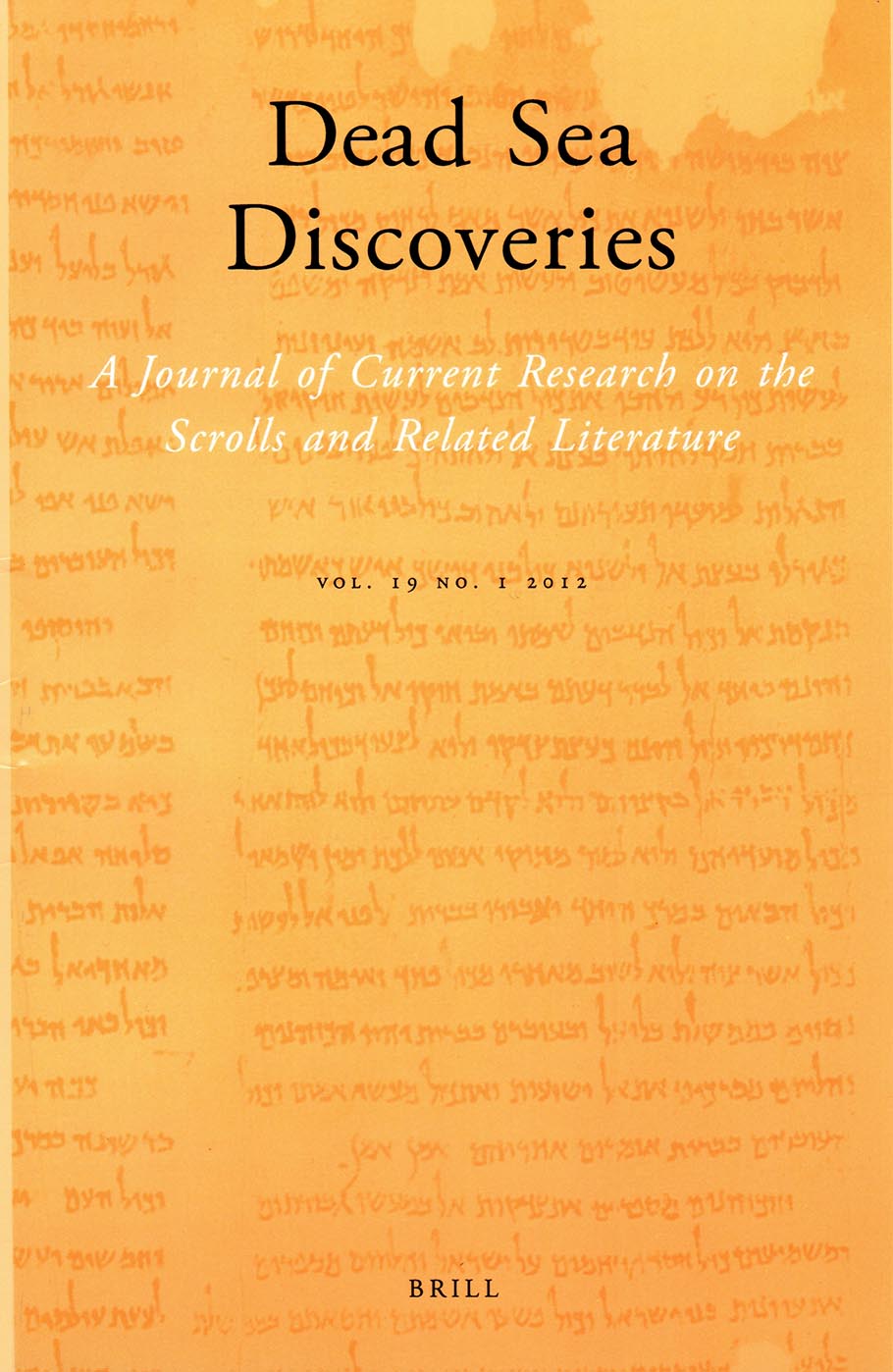
'His Wisdom Will Reach All Peoples’: “4Q534-36, Q 17:26-27, 30, and 1 En. 65.1-67.3, 90, Dead Sea Discoveries 19.1 (2012): 71-105
https://brill.com/view/journals/dsd/19/1/article-p71_4.xml?language=en&ebody=previewpdf-60547
The Qumran Aramaic texts represent a distinctive group within the larger Qumran corpus that is of considerable significance to the study of Jewish messianism and the New Testament. The identities of the figures in 4Q246 and 4Q534, in particular, have been the subject of ongoing debate. The Parables of Enoch, although not found at Qumran, also play a role in the comparative study of the Enochic corpus and the New Testament. This discussion revolves, in part, around the identification of Jesus as the “son of man,” a title used both in Q and the Parables. Using Q 17:26–27, 30 as a control text, this study focuses on the identity of the mysterious Elect of God figure in 4Q534 in order to explore whether 4Q534, like 4Q246, provides evidence of a confluence of apocalyptic traditions in Early Judaism and nascent Christianity.
'Seek His Kingdom’: Q 12,22b-31, God’s Providence, and Adamic Wisdom, Biblica 92.3 (2011): 392-410
https://www.jstor.org/stable/42615048
In Q 12,22b-31, a kingdom-saying functions as the climax to a sapiential collection, but it is not self-evident that this message is sapiential. Q 12,31 uses traditional wisdom structures and forms to advance what appears to be an “eschatological” message. In this study, I re-examine the nature of the wisdom in Q 12,22b-31 and argue that the theme of God’s providence can be understood in relation to eschatological ideals of the restoration of creation and a “Son of God”/Adamic Christology.
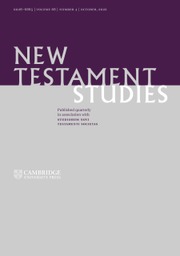
'Blessed is Whoever is Not Offended by Me': The Subversive Appropriation of (Royal) Messianic Ideology in Q 3-7, New Testament Studies 57.3 (2011): 307-24
https://www.cambridge.org/core/journals/new-testament-studies/article/abs/blessed-is-whoever-is-not-offended-by-me-the-subversive-appropriation-of-royal-messianic-ideology-in-q-37/E146FB6E7AD5D86278CC24C3C0FDF607
Jesus is never explicitly identified as the ‘messiah’ or christos in Q. The conspicuous absence of this particular term—so frequently used in the Pauline letters and the Gospels—is often taken to mean that the Q community was uninterested in, unaware of, and/or rejected kerygmatic traditions which understood Jesus as a ‘messianic’ figure. Yet a careful analysis of the literary structure of Q 3–7 demonstrates that the redactor of Q both appropriated and subverted ‘traditional messianic expectations of a popular warrior-king by framing Jesus' baptism, temptation, and Inaugural Sermon within announcement and confirmation passages that serve to both affirm and qualify Jesus' relationship to ‘messianic’ traditions. Located within a text dominated by the theme of eschatological reversal, the literary structure of Q 3–7 serves as a rhetorical defense in the redactor's construction of a new identity for Jesus.
The Ascetic Jesus, Journal for the Study of the Historical Jesus 8 (2010): 146-81
https://brill.com/view/journals/jshj/8/2/article-p146_2.xml
New Testament scholars have long been divided on the question of Jesus' asceticism. This study will argue that the historical Jesus should be identified as a first-century Jewish ascetic. Here, asceticism is conceptualized as a sociological, cross-cultural, and comparative lens through which a range of behaviors can be understood. Consequently, by comparing the early Jesus tradition with other contemporary manifestations of ascetic practice in antiquity, this study will illustrate that an ascetic model for the historical Jesus is not only compatible with(in) first-century Judaism but has the explanatory power to reconcile conflicting portraits of Jesus and advance a theoretical lens through which additional future work on the historical Jesus can be conducted.
